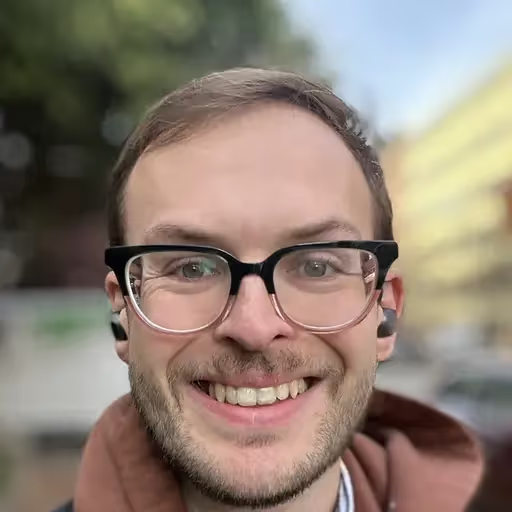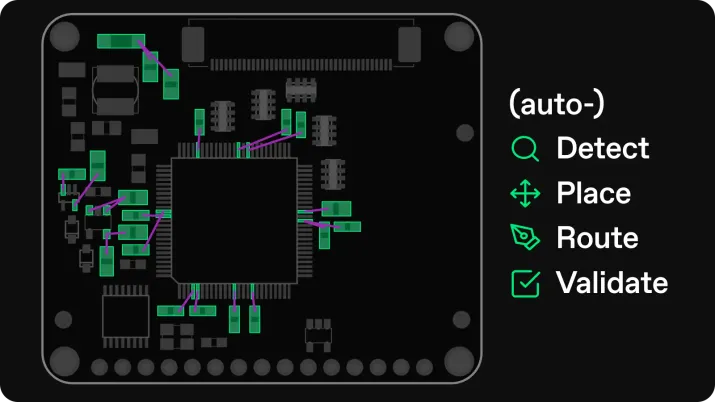Roger Isied didn’t begin his career expecting to shape the frontier of PCB design. Trained as a mechanical engineer, he first stumbled into simulation while helping UC Berkeley’s solar vehicle team. That early frustration—spending “a hundred hours trying to figure out how to run a simulation” only to have no clear design direction—sparked a lifelong pursuit: how to make simulations truly inform engineering. Today, as part of Quilter’s physics team, Roger brings his passion for design automation, physics-informed decision-making, and first-time-right engineering into an industry hungry for breakthroughs.
“Humans in the Loop” showcases the people behind Quilter’s mission. In Roger’s story, we see not only technical depth but also a commitment to curiosity, teamwork, and a bigger vision: reshaping how engineering itself is done.
Origins
Roger’s journey into engineering wasn’t predetermined. “I really didn’t know what I wanted to do even out of high school,” he admits. What nudged him forward was his parents’ habit of handing him every tech challenge at home—wiring smart gadgets, fixing cars, or figuring out new devices. YouTube’s early how-to videos became his classroom.
By the time he reached community college, Roger realized he loved physics and math most when they were anchored in tangible hardware. “That sort of drove me towards more of the mechanical engineering side of it,” he recalls. For him, engineering was never abstract equations alone—it was about “something that I can really see and visualize.” That human spark, born in everyday tinkering, would shape his career path.
Journeys in Engineering
At Berkeley, Roger joined the solar vehicle team and quickly encountered the limits of traditional tools. “I probably spent like a hundred hours trying to figure out how to run a simulation,” he recalls, only to be told by teammates they didn’t know what to do with the results. Frustrated, he asked: “Why can’t we just use the simulation to tell us how we should change the design?”
That question became the heart of his graduate work—building “homegrown custom simulations” to directly guide design decisions, especially in the domain of additive manufacturing and metal 3D printing. His motivation was simple: commercial software demanded expertise just to run basics, while Roger wanted targeted tools that answered specific questions.
“For me it’s always like…whatever we’re designing digitally is going to be fabricated, it’s going to be created and actually used,” he explains. That insistence on connecting simulation to real hardware, on achieving “a first time right solution,” continues to define his work.
Why Quilter?
Roger joined Quilter because it felt like the perfect fit between his background and the scale of the challenge. “Quilter is trying to solve a very difficult problem that is sort of needed across many industries, but is really apparent in PCB design,” he says. Current methods feel like piecemeal puzzle-solving—placing components one by one, adjusting routing in fragments. “It’s almost like trying to look at a picture and starting at the top left corner and then scanning your eyes across back,” Roger explains. Physics-informed automation, by contrast, lets engineers see the whole canvas at once.
For him, Quilter represents more than an industry disruption. “It’s more than just changing an industry—it’s sort of changing how engineering design is done overall.” Moving beyond trial-and-error toward optimized, physics-grounded design could unlock not only better boards but also new realms of creativity for engineers. “Instead of saying, we’re going to design something like this because we know it works…what is the truly optimized design for what we’re trying to accomplish?”
Beyond the Workbench
Outside of work, Roger brings the same energy to food, sport, and play. “I love sushi. I am a huge sushi person. I am obsessed with salmon sashimi,” he laughs. He dreams of pairing fresh sashimi with “a nice Sapporo on a beach” in Japan, a trip he hasn’t yet taken but hopes to.
He’s also an avid basketball fan—both as a Golden State Warriors follower and a regular player. “That is like my primary form of working out. I try to go three to four times a week.” Hiking with his wife and their Australian shepherd balances things out. And when it’s time to unwind? Gaming. Roger once competed in NBA 2K’s early online circuits, reaching top-10 rankings. These days it’s less about competition than camaraderie. “Competing because it’s fun to compete, not because I must win at all costs,” he reflects.
A Line to Remember
“My general approach is sort of like, let life live—trying to be a positive influence on other life around me. That life can be other humans, other animals, other plants, anything. Living, trying to sort of support that life however way I can.”
















